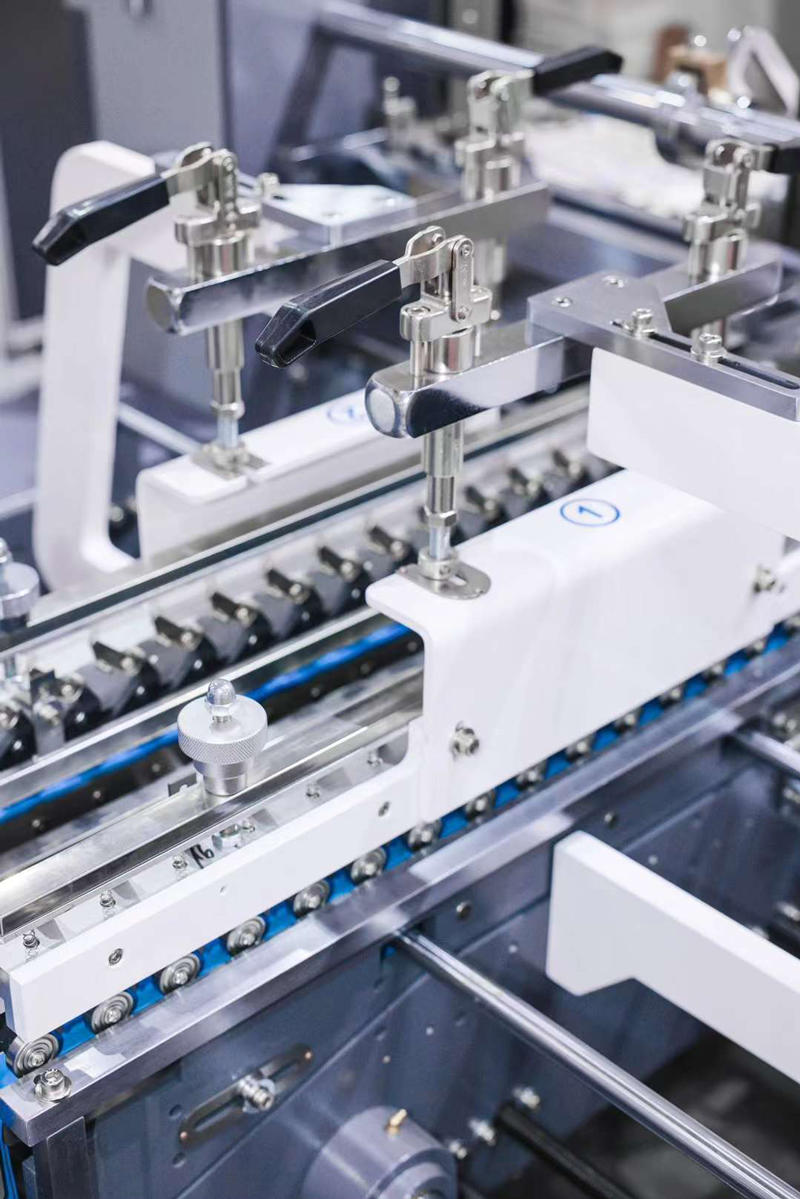After careful observation and analysis, it has been found that the paper feeding structure of the machine employs a belt-driven friction method to guide the cardboard into the "bridge" belt. The working principle of paper feeding is as follows: a row of feeding belts made from rubber is located on the feeding table, and the cardboard is directly stacked on top of these feeding belts. When the belts rotate, the frictional force causes the bottom sheet of cardboard in contact with the belts to be fed forward. The ability of this feeding structure to continuously feed paper depends on the contact area between the belts and the cardboard, as well as the magnitude of the frictional force between them.
Since the cardboard is made of multiple layers of bonded materials, its flatness is much poorer than that of paper, which directly affects its contact area with the belts. The unevenness of the cardboard leads to an irregular distribution of contact points during the feeding process, making it difficult to form a stable frictional force. Some areas may have good contact, while others may have gaps, resulting in insufficient frictional force and affecting the stability of paper feeding. This issue becomes more pronounced when the cardboard is curled, leading to frequent feeding failures.
On the other hand, during the paper feeding process, it is inevitable that paper debris will fall off and adhere to the rubber belts, which can easily cause slippage. During high-speed operation, the shedding of paper debris is unavoidable. Once this debris sticks to the belts, it disrupts the frictional force between the belts and the cardboard, preventing the belts from effectively moving the cardboard forward. Moreover, over time, the accumulation of debris can worsen the slipping phenomenon, further affecting production efficiency.
To address these issues, several measures can be considered. First, to improve the flatness of the cardboard, a flattening device can be installed at the paper feeding entrance. This device can moderately flatten the cardboard before it enters the feeding belts, thereby increasing the contact area with the belts. Additionally, the tension of the feeding belts can be adjusted to ensure that the belts closely adhere to the cardboard, enhancing the frictional force.
Secondly, to tackle the issue of debris adhesion, a dust collection device can be installed above the belts. This device can promptly remove fallen paper debris, preventing it from sticking to the belts. Furthermore, regular cleaning of the belts should be conducted using specialized cleaning tools to remove any debris and contaminants that have adhered to the belts, keeping them clean.
Additionally, the operational workflow of the folder gluer can be optimized. For example, when stacking cardboard, efforts should be made to maintain neatness and flatness to avoid excessive curling or deformation. Operators should also enhance monitoring of the machine, promptly identifying and addressing issues to prevent escalation.




